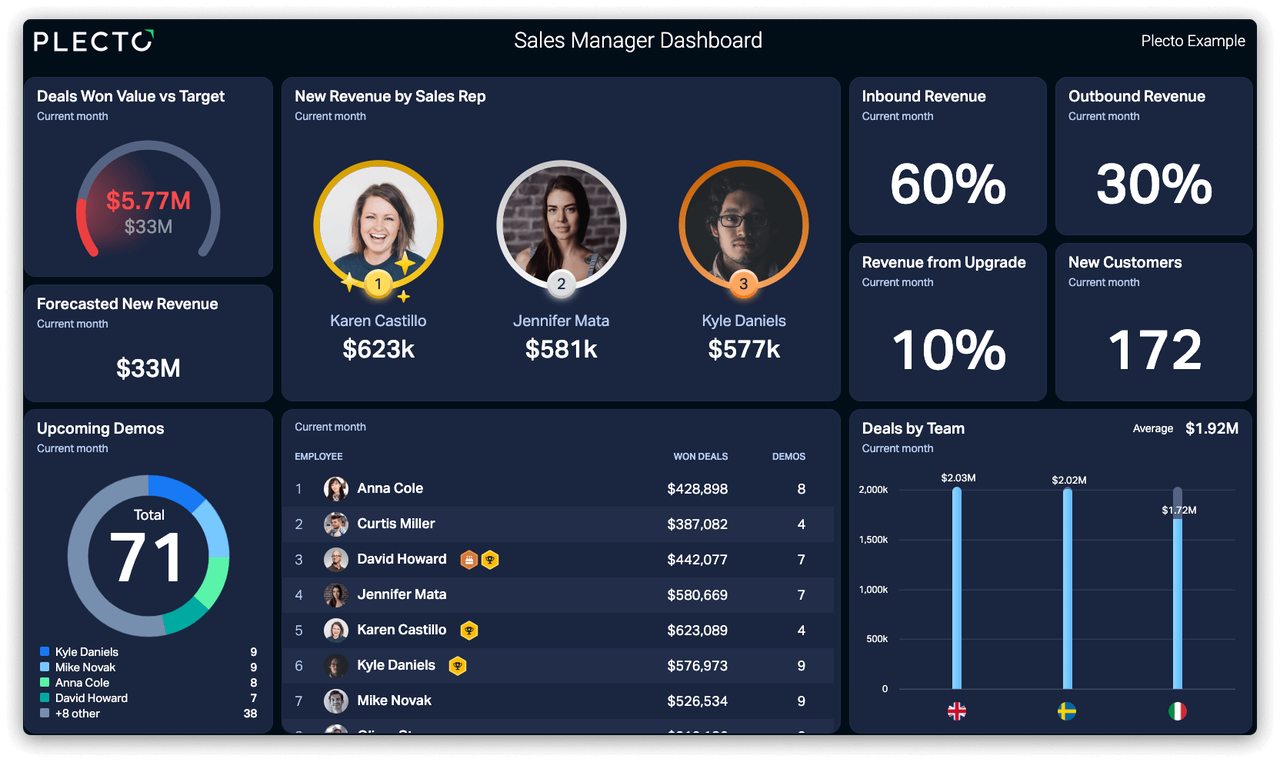These days, technology changes and develops even faster than we are able to follow. Updates, news, releases… it’s hard to keep track of the latest IT tools while focusing on growing a business! Although these could actually help you do it better and faster.
Within this group of business’ IT tools, you’ve probably heard about BI, right? These letters stand for Business Intelligence, which we can imagine is all about smart(er) choices.
However, we don’t consider Plecto to be in the BI-software group. Wonder why? Keep on reading and you’ll find out what the big difference is!
BI... what?
Let’s start from the beginning.
Business Intelligence is used to research, gather and present business information. Therefore, it’s purpose is to bring accurate insight into the decision-making process of a business. Moreover, Business Intelligence systems are essentially data-driven Decision Support Systems (DSS).
It’s not strange that, with the rapid development of Big Data, organizations are also generating more and more data that needs to be tracked, measured, followed and understood - at least to some extent.
This is why BI tools work mainly by pulling internal data produced within a company rather than from outside sources.
It’s mindblowing to think that these tools were traditionally used to create quarterly or yearly reports, when now there are some offering real-time and automatic reports (can you imagine who?😉)!
So one thing we know now: BI tools are all about collecting data - internal or external, converting it into valid information and presenting it with the purpose of improving business decisions. As Hitachi Solutions Canada once wrote, BI delivers relevant and reliable information to give employees and managers insight into their data.
How do we deal with data?
As humans, we all have a limited capacity of data that we can process and understand by ourselves. And it’s definitely not even close to the amount of data an organization generates on a daily basis!
What’s more, the evolution of social media and the broad variety of content available at any time has created an increasing demand for fast and easy visuals in detriment of texts.
Nothing new here, right? You can confirm it yourself by trying to notice how able you are to pay full attention to this article from start to end.
But don’t feel bad about it, this new way of consuming and working with data is already part of us!
As David McCandless puts it in one of his TED talks, there is a commonly shared relief when we get introduced to some kind of data through visuals and graphs, rather than in its raw state.
However, as he also points out, data by itself doesn’t always bring you the whole picture. There needs to be a side research together with it in order to get the relative data as well, which is what brings a more accurate context for that initial data. And yes, this is something BI tools help with!
So, in summary, BI tools collect, analyze and report the data created within an organization in order to add more accurate insight into the regular decision-making processes.
Then, what about Plecto?
Why is Plecto not a BI tool?
As it can be found in the literature covering this regard, data by itself is meaningless; it’s just the objective side of a fact that needs to be processed to some extent to have a purpose.
The result, therefore, of giving simple data a meaning is information, a more valuable asset for an organization because it actually brings something to the table.
And it’s the next step that matters. It’s people and their minds that turn information into actual knowledge by simply processing and putting it into context: “It’s the individual that interprets data through information, chooses to make use of it and so create knowledge” (Dougherty, V., 1999)*.
It’s in this knowledge creation where Plecto comes into play. Because the goal is not (or not only) to gather the data for you, but to help you optimize your organizational behavior according to it.
Data in Plecto is alive, it’s in constant change and update because it follows your progress in real-time. And not only to show it, but also to support your evolution both as a company and individually as workers.
Data through Plecto to change behavior
As we’ve seen, BI software is a great tool for doing the research and analysis of your data. But afterward, do you know how to work with it?
In Plecto you can set alerts and notifications that save you from spending crazy amounts of time going through your data. Because they are automatic, you set them once and it’s done, you can now focus on growing your business.
One of our main goals is, to make data friendly to every person working in your company, as easy and clear as it can be!
That’s why it’s designed to be displayed on a screen for everyone to see and integrate into their daily routine. And also to trigger conversations that - as we know now - turn this information into knowledge that will grow in the company.
In conclusion, Plecto goes a step further than BI tools and evolves with you. We want you to succeed, so we provide you with the tools to do so and walk with you along the way!
You choose the field that you want to boost, and we help you boost it.
* Dougherty, V. (1999). Knowledge is about people, not databases. Industrial and Commercial training.

